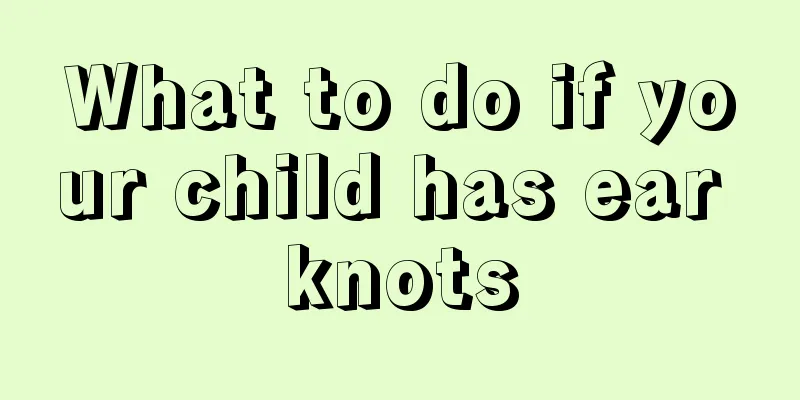What to do if your child has ear knots

|
Ear knots are a type of secretion that many people experience, mainly located inside the ear, and are also called "earwax" or "earwax". A moderate amount of ear knots can protect the ears to a certain extent, but if there are too many ear knots, they need to be cleaned in time, because this will have a certain impact on ear hygiene and hearing. So, what should we do if children have ear knots? Ear knots, commonly known as "earwax", are called "cerumen" in medical terms. Ear knots are generally flaky, but some are sticky and yellow. The sticky yellow is called "oily earwax". The baby has ear knots in his ears, which is a sign of cerumen embolism. Ear knots are when earwax accumulates in the ear canal and blocks it. It is normal for babies to have ear knots. Ear knots can be divided into mild and severe ones. Mild ones can be removed by someone else, while severe ones may have already formed a lump. Since the external auditory canal is curved and has less subcutaneous tissue, removing it may easily cause pain. In this case, we cannot dig it out forcefully, as this will hurt the baby's ears and may also push the embolic earwax into the eardrum and damage it. Therefore, in order to remove earwax without damaging the external auditory canal and tympanic membrane and without causing pain to the patient, the following methods can be used: 1. Gently insert the earwax hook into the deep part of the external auditory canal along the posterior upper wall of the external auditory canal and the earwax to prevent damage to the tympanic membrane. Then gently turn the earwax hook to hook the earwax, loosen it, and slowly pull it outwards to remove it. 2. First, use 3-5% sodium bicarbonate solution to soften the earwax, once every 2 hours. After 3 days, flush out the earwax with warm water. Do not use flushing if there is external auditory canal stenosis or acute or chronic suppurative otitis media. 3. If the earwax cannot be removed by flushing, the earwax can be slowly sucked out with an aspirator after the ear drops are softened. Alternatively, you can also drop some olive oil into the ear to soften it, then slowly take it out, or use a clip to clip it out. If it is too hard, it will hurt. Finally, if the child is too young, or you are not sure how to remove it, it is recommended to take the child to the hospital's ENT department for examination in time and let the doctor remove it to avoid improper operation and harm to the baby. |
<<: What to do if your child is timid
>>: Why does my baby's urine smell?
Recommend
The child has intermittent forehead pain
Although parents are very careful in taking care ...
Will children become stupid if they eat too much meat?
We all know that children should supplement nutri...
How to care for babies born by caesarean section
According to the latest data, the caesarean secti...
Why is the baby's lower lip trembling?
Many babies are born in the hospital every day. S...
What methods can be used to change children's poor appetite?
I often hear some mothers talking about their wor...
Newborn care and feeding?
Newborn babies need extra care in terms of care a...
5-year-old child grinding teeth at night
We often see people grinding their teeth while sl...
What is the height and weight of a 24 month old baby?
Whether a child is developing well or not can be ...
What to do if a one-year-old child has diarrhea
Many newborn babies suffer from indigestion and d...
Children often complain of stomachache
Children will have many physical problems in thei...
How old can children clean their ears? How many months can babies clean their ears?
There are many things that children cannot do whe...
What should children eat to grow taller?
Parents who are not tall often wonder whether the...
What should I do if my baby has a fever at seven months old?
Some babies have fever, so they should pay attent...
What are the care for two-month-old babies?
I think everyone will be particularly fond of a t...
The most effective medicine for children's cough and asthma
Speaking of coughing, I believe many parents are ...









